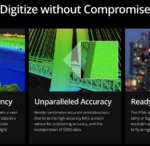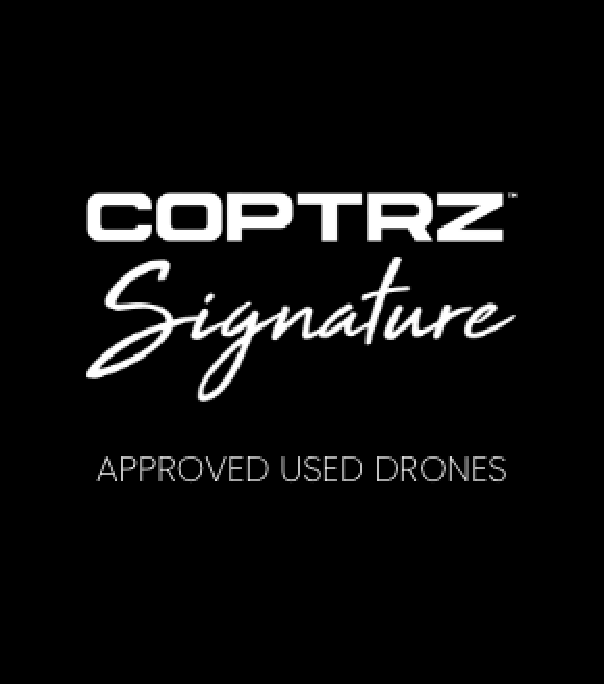5 – 10 minute read
What is the Zenmuse L1?
In aerial surveying, LiDAR technology is increasingly playing a larger role in building accurate models. In October of 2020, DJI announced the Zenmuse L1, their first foray into a fully integrated LiDAR Drone solution for aerial surveying.
DJI noticed the opportunity of a LiDAR based system in the construction and surveying industries because many of the available streams were expensive, fragmented and inaccessible in price to most businesses. The Goal for DJI in designing the L1 was too ‘democratise LiDAR’, making it an accessible tool for surveyors through simpler and more convenient deployment.
Despite the need to be light weight, the L1 boasts some impressive tech, including a Livox LiDAR module, a high accuracy IMU and RGB CMOS Camera. The combination of the Livox LiDAR module and 1-inch CMOS Camera allows an integrated approach to the capture of data, supporting RGB overlays to provide even more insight.

The L1 comes into its own in low light situations and in areas with heavy foliage where traditional drone-based photogrammetry methods would fall short. It can provide quick and precise true-colour point cloud models of structures such as power lines and construction projects.
When combining this with DJI’s flagship commercial drone the Matrice 300 and DJI Terra, the L1 becomes a complete and versatile solution that gives users real-time 3D data, efficiently capturing the details of complex structures and highly accurate reconstructed models.
Let us talk you through the Zenmuse L1, and help you decide if this sensor should be part of your workflow.
You can see the trailer for the Zenmuse L1 here:
What is an Integrated Payload?
The Main advantage of using an integrated payload is that you don’t have to worry about managing multiple subsystems. What does this mean? For example, things like communication and time synchronisation between multiple sensors, such as the RTK, the camera, and the LiDAR are all managed within this payload.
The L1 also benefits from the integration of the Livox sensor and the 1-inch CMOS sensor all in one payload. With use cases becoming ever more demanding, it’s no longer practical to force surveyors to choose between LiDAR and RGB imagery. The L1 provides a versatile and cost effective solution to fulfil basic functions like taking photos and recording videos, as well as providing real-time colour information for the point cloud data during the scanning process.

Zenmuse L1 Specs
The L1 is no slouch, it captures and generates point clouds in real-time at 240,000 pts/s and features a detection range of 450 m (80% reflectivity). The module also supports both Line Scan Mode and Non-repetitive Scanning Mode, a unique technology developed by Livox which provides full coverage of the area of interest in a very short amount of time.
The Zenmuse L1 integrates a powerful yet ultra-lightweight Livox Lidar module with a 70° FOV, a high-accuracy IMU, and a 20-megapixel camera with a 1-inch CMOS sensor and a mechanical shutter. The Zenmuse L1 can generate true-color point cloud models in real-time, or acquire a vast area (up to 2 km2) of point cloud data in a single flight.

While most other LiDAR drone systems in the market require you to buy stabilising solutions separately, the L1 ships on a 3-axis stabilised gimbal in the box.This means that any inadvertent rotational movement of your drone (tilt, roll, and pan) is dynamically stabilised within ±0.01°, enabling homogeneous point distribution even at very high scan rates. As such, the risk for data gaps goes down significantly, reducing the costs associated with re-flying.
Thanks to its IP54 rating, The Zenmuse L1 can operate in rainy or foggy environments while the Lidar module’s active scanning method enables flights in low light conditions.
Who Is the Zenmuse L1 for?

DJI have already found success testing the L1 with Halo Robotics in Indonesia during the inspection and surveying of pipeline and power structures. The team found that compared to conventional methods involving photogrammetry which can be time-consuming, the L1 was able to significantly increase the speed of the whole workflow, from data capture to post processing.
The team conducted several flights over a number of hours with the L1 and were impressed by the RGB values produced by the point clouds which made the outputs easier to understand and more efficient to work with.
“With the L1, things that were almost impossible and could not have been done before have no become possible to do, greatly helping our operations” – Eli Moselle, CEO of Halo Robotics
DJI are quick to emphasise though that the L1 has far more uses than Inspection and Survey. Public safety and rescue applications have also been proposed to enable emergency response teams to take control of situations in real time, while the capabilities of LiDAR can support the collection of topographic survey data in dense vegetation fields to both EDM and DSM.
How does LiDAR work?

For those not in the know, LiDAR, which stands for “Light detection and ranging”, is a technology that’s been around for decades, yet its recently become a feasible payload for large drones such as the M300. A LiDAR sensor sends out a beam of laser light and measures the time it takes for the pulse to return as they bounce off of surfaces.
LiDAR uses oscillating mirrors to send out laser pulses in a wide sweep, generating a sheet of light to analyse a large area. By measuring the timing and intensity of the returning lasers, the data can provide detailed readings of the terrain and points on the ground.
The Sensor itself is only the beginning of a LiDAR system, while it’s essential for the capture of data, you’ll also need a high – precision satellite positioning system (GNSS) as well as high – accuracy sensors to determine the orientation of the sensor. When mounted on the M300, the Zenmuse L1 benefits from the RTK system built into the drone to achieve centimetre level accuracy.
Whats better, LiDAR or Photogrammetry?
Want to find out more about LiDAR and Photogrammetry? Click Here for our in depth blog where we put both data collection methods head to head and find out which one is the best.
Interested in the Zenmuse L1?
Speak to our Industry expert James Pick today and get your hands on the latest payloads in the industry. For more information click here for our Zenmuse L1 product page.
Don’t forget to sign up to our newsletter below to stay up to date with the latest drone news and never miss a release of a new drone!

